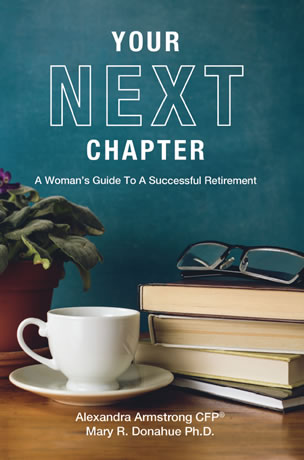How to Downsize Efficiently
Covid 19 has caused many people to move out of the city to the suburbs to houses where they have more room especially if they are able to work from home. However, people who are retiring are often moving in the opposite direction, downsizing to a smaller home. This may be moving from a house to an apartment or even to a retirement community.
We discuss the topic of housing extensively in chapter seven in our book. When working with clients facing this move over the years, I have found that although intellectually they know downsizing is the right thing for them to do, actually doing it is difficult. Letting go of the possessions you have accumulated over the years is hard emotionally as well as physically. In some cases where the person really is having trouble, I suggest they do what they can and if they hit a stumbling block, rent a storage space and then go through everything at your leisure. It has been my experience that they find that whatever they put in storage they find they don’t miss!
Personally, I have gone through this process gradually over the past few years which makes it easier. My husband and I started by moving from a four story town house to a two bedroom apartment. Geographically they were separated by 20 blocks so you would think the move would be easy. Not so, because my husband is a “hoarder” and I am a “throw awayer”. So; for me it was easy to rid myself of possessions. My husband didn’t share my sentiment. In order to keep peace in the family we decided I would organize most of the house and he would take care of his room. To make sure it really happened, I hired his daughter to help him sort out his possessions. This way we were able to avoid a divorce! Later we downszed further by moving from the apartment to a retirement community.
For those who don’t have a daughter to help out, there are professionals you can hire who are trained to help you with your move. They are called the National Association of Senior Move Managers. They will help you figure out what you want to keep and how to dispose of the rest of your possessions
If instead you want to try to do this yourself, one approach is called the “four-box” system. You divide your possessions into four categories. These are: 1) throw away, 2) identify items you want to keep, 3) appraise and sell unwanted items of value and 4) donate items you no longer need or want.
You may have read or heard of Marie Kondo and her book about reducing your possessions whether you move or just are trying to make your life simpler. She starts with your clothing and then progresses to books, papers etc. For example, you put all your long pants into a pile on the floor and then just pick out the five or ten that “give you joy” and then give or sell the rest away. You go through all your clothing, then books, papers, etc.
For items you want to sell, there are several apps you can go to in order to sell these items. In Kiplinger’s Retirement Report November 2020 there is a detailed article about some of these which includes Decluttr, NextWorth, ThredUp, the RealReal, Mercari and Poshmark.
In addition, there are consignment stores. We currently live in Florida where these abound. However, they have different approaches. For instance, one store in our area deals primarily with upscale furniture. You take a picture and they decide if they want to take your item and price it. After the first 30 days, they reduce the price 10%, after 60 days they reduce 10% again. After 90 days if it hasn’t sold, they donate it (although they call you before the time period is up and ask if you want to reduce the price).
Personally, I found that the price you get for selling items is often disappointing and the process arduous. For some, getting a tax deduction for gifting unwanted items to a charity might have more value. Whichever approach you choose, I recommend you take pictures of the items, print them out and make a written record of what you will donate. If donated, value the donations conservatively in case IRS chooses to audit your tax return. If you go to the Salvation Army website, they have a Donation Value Guide which will help you price your donations realistically.
There is no time like the present to start on this project, even if you aren’t moving soon. As Marie Kondo says, ridding yourself of possessions can be truly liberating. Of course, that is easy for me to say since I believe less is more. Good luck!
.jpeg)
